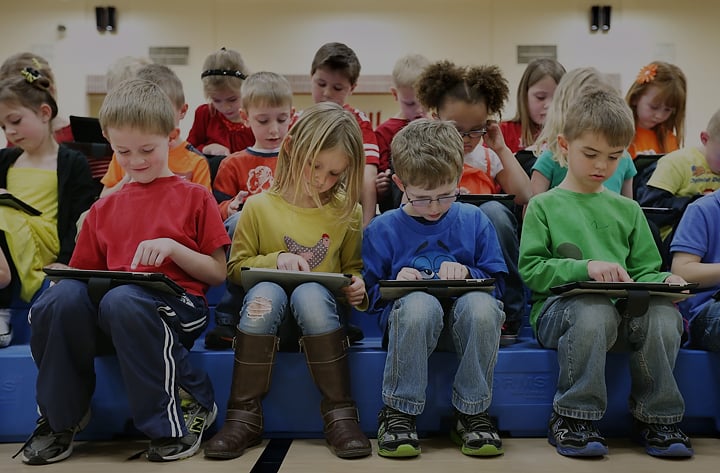
If it’s been said once it’s been said 1000 times, technology in education is growing at an incredible rate. The challenge for our campus wireless networks is keeping up; making sure you’re able to scale and grow to support the present changes as well as what lies ahead.
A big part of this is being proactive and understanding what’s coming around the bend, as they say. Recently released was the NMC Horizon Report: 2015 Higher Education Edition. This joint report from both the NMC (National Media Consortium) and the Educause Learning Initiative detail the latest and most important advances and trends in education technology that are transforming our college/university campuses over the next 5 years.
Below we’ve outlined the six most important trends and/or developments into three categories (Immediate, 2-3 years, and on the horizon (4-5 years out).
Immediate Developments
These technological changes have already had an impact on instructional methods and student performance. They focus on blended learning experiences and classroom redesign:
Bring Your Own Device (BYOD) technology:
BYOD technology has repeatedly been associated with increased productivity, a condition that promises to improve students' academic performance. BYOD's mobile capacities ensure that learning can occur anywhere a student may be, 24-7.
The President's strategy for expanded Wi-Fi access can also improve the capabilities of student personal devices, as vehicles of learning, both inside- and outside the traditional classroom; students can leave their mobile devices on in the classroom to generate enhanced learning experiences, rather than shut them off upon entering school.
Moreover, evidence suggests students respond positively to opportunities for BYOD-assisted education. BYOD also stimulates lower-cost educational technology.
Flipped classrooms:
Flipped classrooms reverse the traditional instructional model, providing the standard classroom-lecture online, rather than in-class. Instead of simply sitting through a lecture, students become interactively involved in a classroom setting where actual problems of course subject-matter are lessons' real focus, increasing student contact with teachers and their classmates.
Classroom-time revolves around what formerly would've been assigned as homework, helping students develop solutions to the practical problems of applying course information.
With this revised instructional sequence, students watch the lecture at home, online, at their leisure, taking notes and writing down questions that become the subject of subsequent classroom problem-solving sessions.
Nearly 30% of teachers already use some form of flipped classroom instruction; another 25% are expected to soon follow this growing trend.
2-3 Years
These technologies should begin to have a significant impact on the educational community within three years. Their concentration is measuring the impact of open resources on students' learning experiences:
Makerspaces:
Generally open physical spaces where communities of students work independently, and interactively, on course work and personal projects, depending on the nature of the class and the assignment.
Teachers serve as mentors, providing instructional guidance in a learning space that encourages collaboration and risk-taking. Makerspaces feature use of educational technology.
They lead to the development of the kinds of skill-sets likely to be required in the workplace of the future, helping fulfill one of education's primary goals.
Wearable technologies:
Current statistics indicate more than 20% of adult students already use wearable educational technology of some kind, in the form of Google Glass, Autographer, Muse, or Keyglove, among other products.
Wearables can also increase younger student's interest in and positive interaction with their immediate environment, suggesting many applications for the K-12 classroom.
On the Horizon
Additional educational technologies are expected to become prominent by 2020; they include:
Adaptive learning technologies (ADL): Student-centered personalized learning is a basic component of ADL. It customizes each student's educational experience toward the individual's unique learning style.
Course content and delivery are modified on an individualized basis through use of emerging technologies designed to respond to student-specific ministrations, wherein each student has access to the Internet for digital course materials/textbooks.
The Internet of things (IoT):
Taking advantage of global Internet connectivity, both ADL and IoT depend upon further development of, and student access to, smart classrooms that feature 1:1 computing settings.
Delivering high-quality, low-cost course-content, hypersituating of material will bring knowledge directly to the student's location, Expanded campus WiFi will offer real-time student-interaction with international educational environments, better-coordinating the acquisition of challenging material.
Increasingly effective and accessible educational technology will enrich teaching and learning experiences to a customized degree unprecedented in the past.
While everyone of these new trends and new technologies are great and present great opportunity they are only possible if your campus wireless network is prepared to support them. The first peice of the technology puzzle for any campus is having clear goals.
What are you trying to do with the technology?
Once this is established you can develop a plan to design a campus wi-fi network that is capable of supporting these new advances, not only in the present but also with the ability to grow with you.
At SecurEdge Networks we have been analyzing, designing and supporting robust, secure enterprise level wireless networks on campuses across the United States for almost a decade. If you need any help with your current or new network, reach out to us here, we'd love to chat.





